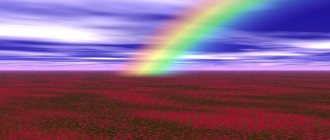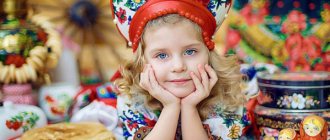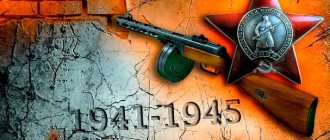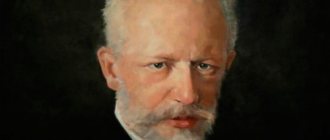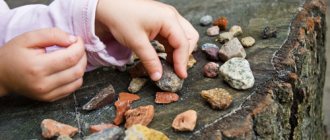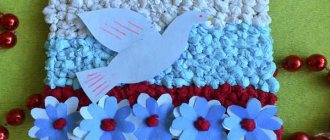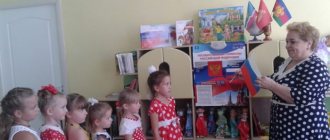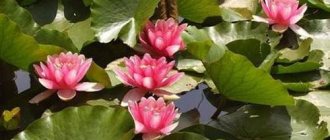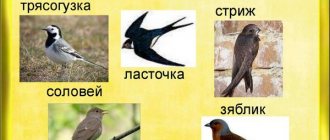A story about Russia for children
Content
There is such an important concept - the state. A state is people living in a certain territory, and at the same time it is a political space. Our state is called Russia. Russia occupies a vast territory, one-eighth of the Earth's land area inhabited by humans.
Russia is great from birth, and not because of conquests. Its history is multifaceted. On the territory of our country, long before statehood, different peoples lived. Each people occupied its own geographical and historical niche, bearing the stamp of originality and uniqueness. The Russian state has inherited many traditions that had developed before it on this territory, including good neighborly relations.
The geographical position of Russia is unique; its territory covers several natural zones: arctic desert, tundra, steppe, semi-desert, forest-tundra and others.
Like any other state, Russia has its own flag, anthem and coat of arms. Russia is a federal state. The head of our state is the President. The protection of the state is carried out by the Armed Forces. Day and night in the air, on land, on water, they vigilantly monitor all events taking place. The task of the Armed Forces is not to miss the enemy. It is very important that all Russian citizens sleep in a calm, peaceful sleep.
Russia is particularly proud of the fact that more than 190 peoples live on its territory. All the peoples of Russia (Mordovians, Udmurts, Ossetians, Buryats and others) live their full lives.
According to the Constitution (basic law), the official language in the country is Russian. All laws and regulations are written on it, and the Constitution of the Russian Federation is written on it.
As for the Russian economy, it should be said that the level of economic development of the country is a historical concept. Different periods of development of the Russian economy and the world economy have made and are making certain adjustments to the composition of the main economic indicators.
There are difficult times in the economy. But the entire history of the Russian people shows that their creative powers, intellectual and labor potential will in any case overcome difficulties.
Today, Russia is the largest state, whose population is approaching 150 million people. Russia has always pursued a friendly policy, a policy of partnership with other countries: large and small, near and far.
Russia is our Motherland. Our blood relatives lived and worked on this land. Many of them defended their homeland with weapons in their hands. Not everyone returned from the battlefield, eternal memory to them who fell in unequal battles for the Fatherland. Motherland is a great word, great and very important.
detskiychas.ru
Native Americans are the descendants of our Eskimos
Due to the proximity of the territory of Kamchatka and the coast of Alaska, the indigenous people of the two continents had fairly close communication. This event was also helped by the fact that in the winter months it became possible to travel on foot from one continent to another. Based on this, as well as from their external, cultural and traditional similarities, we can conclude that both Native Americans and our Eskimos are representatives of the same people .
"We live in Russia". Educational activity for children ⋆ Planet of Childhood
Program content:
- To consolidate children's knowledge about the name of the country in which they live, its nature, some historical events, culture (oral folk art, folk and applied arts).
- Clarify children's knowledge about such a concept as tradition.
- Remember the traditions of the Russian people, which have already been talked about, and introduce them to other traditions.
- Cultivate respect for traditions.
- To form patriotism for the Motherland.
Progress of the lesson
The lesson is held first in the “Sign Room”, then in the “Upper Room”. Children stand at the geographical map of Russia.
Conversation about the Motherland (using a map).
- Guys, today I want to talk to you about our Motherland. What is the name of the country we live in? (Russia)
- Who can show the borders of our Motherland on the map? (The called child points with a pointer at the map of the country’s borders)
— What can you tell us about the nature of our country? Look at the illustrations and try to write a short story.
Sample story.
Russia is a large country, it has many forests, rivers, mountains and hills. In the forests there are different animals, birds, different trees and shrubs. Our forests are rich in many mushrooms and berries.
There are many rivers flowing through the whole country, in which there are many different fish. One of the largest rivers in Russia is the Volga, on the banks of which the city of Togliatti is located. We live in this city.
The story "History of Russia".
- Well done. Yes, our country is very big, beautiful and rich. It arose a long time ago and has an ancient and interesting history. Previously, there were many principalities in Russia. The princes fought with each other and seized each other's lands. So the Moscow Prince Yuri was nicknamed Dolgoruky because he conquered and annexed the lands of other princes to his principality. But when Rus' was attacked by external enemies - foreign ones, all the princes united to fight them. And one day they realized that it was impossible to fight enemies alone and decided to unite forever. They chose a chief prince, who began to be called the king.
Fortresses were built to protect against enemies. One of these fortresses was built on the banks of the Volga and named Stavropol. Stavropol means the city of the holy cross. Later, this fortress became a city, and during the construction of the automobile plant, the city was renamed. Now this is a city - Tolyatti. On the coat of arms of our city you still see the holy cross.
Russian oral folk art: proverbs, sayings, fairy tales.
— You and I have read a lot of fairy tales. Why did we talk about many of them as “folk”? What else have talented Russian people composed? (Songs, nursery rhymes, fables, chants, counting rhymes and teasers, tongue twisters, proverbs and sayings).
— What Russian folk tales do you know?
— What is the Russian proverb about friendship?
Round dance.
— And in Russia they loved to dance in circles. Let's get up and start a round dance. (As a physical exercise, a round dance “There was a birch tree stood in the field”) is performed.
The group goes to the upper room.
Conversation about folk arts and crafts.
— And now we are at a Russian fair, where beautiful products made by the hands of Russian craftsmen are sold. Take one item in your hands. Tell us what kind of product you bought at the fair. (Children talk about Dymkovo, Filimonov toys, Khokhloma, Gorodets paintings, amulet toys)
Conversation about Russian traditions.
— Every nation has its own traditions. How do you understand this word? What are traditions? (Children's answers).
— Traditions are a non-Russian word, it is translated from Latin as the word “transmission,” that is, tradition is something that is passed on from one generation to another. For example, there are family traditions. What traditions do you have in your family? (Children's answers).
— Almost all families have a tradition of celebrating the birthday of family members and giving gifts. In all countries of the world there is a tradition to celebrate the New Year at 12 o'clock at night.
— There are traditions that developed many centuries ago and have survived to this day. What holiday do Russian people celebrate at the end of winter and beginning of spring? What do you know about this holiday? For what holiday are eggs painted? What other ancient traditions do you know?
Discussion of the word "name day".
— Tell me, what is a name day? (If the children find it difficult to answer, tell them about the tradition of celebrating name days).
Every person is given a name at birth. It takes a long time to choose a name for a child. Children are often named after their grandparents, or after some other relative or friend. In the old days, in Rus' they took the choice of a name very seriously. It was believed that if the name was chosen correctly, the child would be happy.
There was a custom - when a child was born, the parents ran out the gate and asked the first person they met what their name was. This name was given to the child.
But each name also has its own birthday. It's the saint's birthday. Therefore, if a child was born on the birthday of a saint, then he was given his name. It was believed that the saint whose name the child is named will always protect him from harm. Now people are celebrating their birthday. And in Rus' there was a custom to celebrate name days; this day did not always coincide with the child’s birthday. When name days were celebrated, the birthday boy was given gifts. And there was a custom - the birthday person sat down at the table and was given a pie with porridge. They broke the pie over the birthday boy's head; the more porridge spilled on his head, the happier his life would be throughout the year. Even on this day, some dishes were broken. For this reason, even now, if dishes break, they say “For good luck.”
Conversation about national cuisine.
— And there are also traditions associated with the preparation of various dishes - traditional national cuisine. National cuisine depends on what is grown in a particular country. For example, Japan and China grow rice, so many dishes are prepared from rice. What do they grow in Russia? (Wheat, rye, various vegetables).
— Flour is prepared from the cereals you named. And in traditional Russian cuisine there are many dishes made from flour. For example, the famous rolls and gingerbread. They are baked only in Russia. (Show)
What kind of flour dishes are baked in your family? (Pancakes, pies, pancakes, kulebyaki).
-And in Russia they love cabbage soup. What are they made from? Select the vegetables that are used in preparing the necks.
Didactic game "Cooks".
— The Russian people have a saying: “Shchi and porridge are our food.” This means that porridge can also be called a national Russian dish.
Find the ingredients used to make porridge. What kind of porridge do you like? What are they made from?
— In Russia it is often cold in winter and hot in summer. What drink is often used to quench thirst? (Children's answers)
- This is kvass. (Show). It is made from bread. And in winter, at fairs they sold a special drink - hot sbiten - a drink made from honey. It warmed very well during severe frost.
— Today, guys, we talked about our country, about the talent and traditions of the Russian people. Russian people have many traditions. Talk to your parents, find out what rituals they took part in; what Russian traditions do they still remember?
Author: Lyubov Sergeevna Kochetkova, teacher at MBU Compensatory Kindergarten No. 116 “Solnechny”, city. Tolyatti.
The article is published in the author's edition.
planetadetstva.net
A short story about Russia
Russia is a great country and only the lazy do not know the history of its origin, development and formation. It covers an area of about 17 million kilometers. The country is located in the Northern Hemisphere and most of the Eurasian continent belongs to it. Russia has common borders with eighteen countries, including by sea. At sea we border the USA and Japan.
Russia has a large number of reservoirs, rivers, and lakes. If we talk about quantity, this figure will be about 2.8 million rivers. The largest rivers flowing through Russia are the Volga, Yenisei, Don, Ob and Lena. And only in our country there is the cleanest and deepest lake on earth - Baikal. Russia has the largest sea in the world - the Caspian.
The capital of Russia is the city of Moscow, the infrastructure is developed here, the city is rich in its history.
The country has a large number of megacities. Their population exceeds one million people.
Russia is a country in which a large number of nationalities coexist peacefully. The approximate number is 160 nationalities. Each nationality professes its own religion. Therefore, in Russia you can meet Christians, Muslims, Buddhists, Jews and many other different religions.
The country includes autonomous republics (22) and territories (9).
Russian is the official language of the country.
The Russian flag has three colors: white, blue and red. On the coat of arms of Russia, a double-headed eagle sits majestically, looking west and east. There are places in Russia that are included in the UNESCO heritage. And there are quite a few of them. You can highlight Red Square, Monuments of Novgorod, wooden churches built in Kizhi, St. Petersburg Historical Center.
Geography of the country
Almost 70% of the country's territory is lowland.
In the south of the country there are mainly mountains and the highest Mount Elbrus (5642 meters) is located here. The north, east of Siberia and the Far East are represented by the Verkhoyansk and Sikhote-Alin ranges. There are a large number of volcanoes in Kamchatka, some of which remain active today. A short story about Russia (option 3)
www.istmira.com
The deepest lake in the world
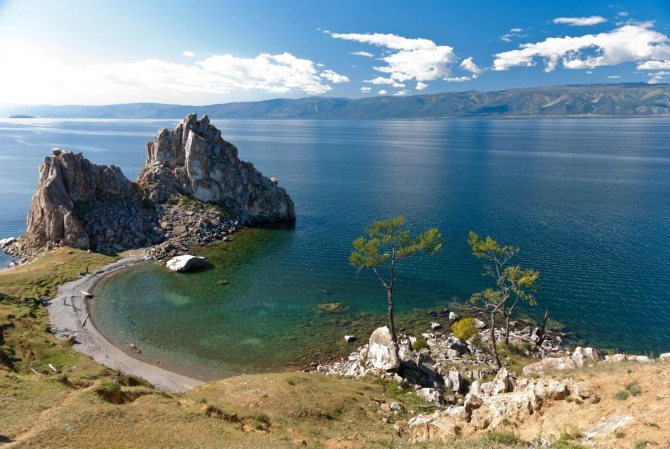
In Siberia there is the deepest lake not only in Russia, but throughout the world . Baikal is a unique reservoir that contains 20% of the fresh water of the entire planet. This is not just a very healthy lake, it is also incredibly beautiful. Thousands of tourists from all over the world come to see these areas.
The lake was recognized as the oldest of all, its age is about 25 million years. In the depths of Lake Baikal there are rare representatives of flora and fauna that cannot be found anywhere else on the planet. The lake is so unique that it is protected by the world organization UNESCO.
Information about Russia
Details Created 01.12.2013 15:33
Flag of Russia Coat of Arms of Russia
Russia , the largest country in the world, is located in the Northern Hemisphere and occupies most of Eurasia. It shares a border with eighteen countries, including the USA and Japan by sea.
From west to east, Russia stretches for 10 thousand kilometers, from north to south - about 4 thousand. The country has 11 time zones.
There are about 2.8 million rivers in Russia, of which the largest are the Volga, Yenisei, Lena, Ob and Amur. The largest lakes: Baikal, Ladoga, Onega and Taimyr.
In the northwestern part of Russia there are 2 of the largest European lakes - Ladoga and Onega. In addition, the country has the largest sea in the world - the Caspian, and the deepest on the planet - Baikal, its depth is 1620 meters.
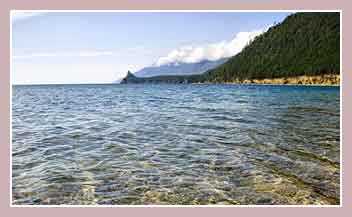
Area - about 17 million km?.
The capital is the city of Moscow . There are 13 megacities in Russia with a population of more than a million people: Moscow, St. Petersburg, Nizhny Novgorod, Volgograd, Samara, Perm, Ufa, Kazan, Novosibirsk, Yekaterinburg, Omsk, Chelyabinsk and Rostov-on-Don. There are 1,030 cities, 2,153 urban-type settlements and an innumerable number of villages and hamlets in the country.
Population - according to the 2005 census, 143.3 million people, the bulk of whom live in the European part; only 20% of the total population lives beyond the Urals.
Russia consists of 21 autonomous republics, 6 territories, 49 regions, two federal cities, one autonomous region and ten autonomous okrugs.
Russia is one of the most multinational countries in the world - about 160 nationalities and nationalities.
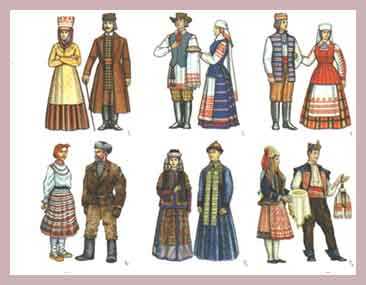
Religion : Orthodoxy, Islam, Buddhism, Judaism and some other religions.
National language - Russian.
The flag of Russia is a rectangular canvas with stripes of the same size, from top to bottom: white, blue and red.
The state emblem of Russia depicts a double-headed eagle against the background of a red shield.
Anthem of Russia : music by A. Alexandrov, poetry by S. Mikhalkov.
The monetary unit is the ruble.
Russia Day : June 12.
23 historical and cultural sites are included in the UNESCO World Heritage List: the Kremlin in Moscow along with Red Square, the St. Petersburg Historical Center, Novgorod monuments, wooden churches in Kizhi and many others.
Geography and Climate of Russia.
About 70% of the country is occupied by plains and lowlands. The largest are the East European Plain and the West Siberian Lowland, separated by the Ural Range
The south of the country is mainly mountainous - the Caucasus with the highest mountain in the country, Elbrus, 5642 meters high, the Altai and Sayan mountains. The north and east of Siberia and the Far East are occupied by the Sikhote-Alin, Verkhoyansk ridges, Chersky ridge and others.
There are many volcanoes in Kamchatka and the Kuril Islands, a quarter of which are still active.
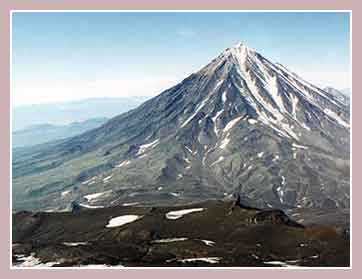
Russia is very rich in forests, almost 40% of the territory is occupied by them, 35 national parks and 84 nature reserves have been formed. The fauna is also diverse, in addition to the usual, familiar hares, wolves, foxes and bears, tigers, leopards live in Russia, and in the north there are polar bears, walruses and others.
There are 4 climatic zones passing through Russia: arctic, subarctic, temperate, in which the main part of the country is located, and subtropical.
Temperatures on average in mid-winter range from -50 °C in the coldest regions to +6 °C in the south, and in summer from +1 °C in the north to +25 °C in the south. Precipitation ranges from 150 mm per year in the driest places to 2000 mm, respectively, in the rainiest places.
Main holidays of Russia.
The night from December 31 to January 1 is New Year , the main Russian holiday. The main role is played by Father Frost and Snow Maiden, who distribute gifts that night. The holiday is mainly family-friendly and very fun.

January 7 - Orthodox Christmas . Not as popular as New Year, but still gaining popularity with the departure of the Soviet Union.
The night from January 13 to 14 is
Old New Year .
Unofficial, incomprehensible to foreigners due to the combination of Old and New, and yet celebrated by many. February 23 is Defenders of the Fatherland Day , former Soviet Army Day.
March 8 is international Women's Day , celebrated for some reason only in the CIS. On this day, some men suddenly decide to wash the dishes after themselves.
May 1 and 2 - May Day . During the Soviet Union, it was called Workers' Solidarity Day. Unlike March 8, this is truly an international holiday, celebrated in many countries.
May 9 is Victory Day over Nazi Germany, a holiday with tears in our eyes. The Patriotic War claimed tens of millions of lives.
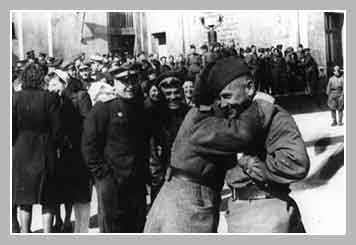
June 12 — Russian Independence Day . An official holiday that is not entirely clear to many – from whom exactly is independence.
November 4 - Day of National Unity , on this day in 1612 Minin and Pozharsky called on the people to fight the Poles who occupied Moscow.
Did you like the topic? Healthy? I will be glad to comments and grateful for likes on the buttons below
- < Back
- Forward >
Add a comment
Russia - brief information | 2013-12-01 15:33:00 | Viktor Rusnak | Russia | https://sam-turizm.ru/media/system/images/new.png | Brief information about Russia, population, cities, climate, geography | Russia, flag, population, cities, climate, geography
sam-turizm.ru
What and how to tell your child about RUSSIA.....
Senior teacher's page
Almost from birth, we begin to teach the baby to distinguish colors, recognize animals and plants, and tell him about the structure of the planet. But we almost never say anything about our country, about the history of our Motherland.
How to tell your child about Russia?
• Go to a local history museum. In the main building of the museum there is an exhibition telling about the events of the Patriotic War of 1812 and the battle of the village of Borodino. The exhibition of the “Museum of Heroes of the Soviet Union and Russia” is dedicated to the traditions of Russian heroism. • Teach children about the war using the examples of our grandparents. • Show the little one on the map how huge our country is, what forests, seas, fields we have, what animals we have. Tell us about our climate. For clarity, you can compare the size of Russia with the sizes of other countries. • You can make your own book about Russia with large pictures and study it with your child. • Look at traditional Russian souvenirs (for example, a matryoshka doll) with your little one, print it out to color it, bake pies with cabbage or pancakes with jam (something from traditional Russian cuisine), play Russian folk songs (“Kalinka - Malinka”) and dance in a circle. • Draw and color the Russian flag together. • Watch and try to play Russian folk instruments (for example, the accordion). • Girls will be interested in making and decorating a kokoshnik.
Facts about Russia that will be interesting for children
• Russia is the biggest country in the world. Its area covers 17.1 million square kilometers. • Russia borders on 18 countries. The total length of the borders is 60 thousand km, more than 20 thousand of them are land. This is the largest border in the world. • Forests occupy 60% of the territory of our country. • Russia is the only country in the world washed by 12 seas: the Black, Azov, Baltic, White, Kara, Laptev, Barents, Chukotka, East Siberian, Japanese, Okhotsk, Bering, Caspian. • Russia is the seventh country in the world in terms of population. It is home to about 145 million people. Poems about Russia that you can learn with your child An immense country If we fly on an airplane for a long, long, long time, If we look at Russia for a long, long, long time, Then we will see Forests and cities, Ocean spaces, Ribbons of rivers, lakes , mountains... We will see the endless distance, the Tundra, where spring rings, And then we will understand what a big, vast country our Motherland is. (V. Stepanov) Russia Here the warm field is filled with rye, Here the dawns splash in the palms of the meadows. Here the golden-winged angels of God descended from the clouds along rays of light. And they watered the earth with holy water, And they overshadowed the blue expanse with a cross. And we have no homeland except Russia - Here is mother, here is the temple, here is the father’s house. (P. Sinyavsky)
ds33ufa.ru
What to tell children about Russia Day
Editor Mamsila
Tomorrow the country will celebrate its own, albeit rather “young” holiday. Frankly speaking, for many this is just an extra day off, so not every parent will answer that the history of the holiday begins in 1990. Then it was called Independence Day, until in 1994 they decided to change the name to a more neutral one - Russia Day.
What a child needs to know
You can tell very young children about the national flag. Draw it together or make an applique from colored paper.
The white on top is air clouds and a symbol of purity. The blue in the middle is the sky, which reminds us of the wide expanses of our country, and the red below, like the rising sun: a symbol of courage and kindness. By the way, the word “red” used to mean “beautiful.”
Tell us about the rich and amazing nature, about the animals living in Russia.
Expand the map and show what a large and multinational country we have. Find the main cities and tell us about them. Show where Russia is located on the world atlas.
There are some surprising facts you can tell older children:
1. The longest railway in Russia is the Trans-Siberian Railway. The train travels from Moscow to distant Vladivostok for almost a week and crosses eight time zones!
2. On Russian territory lies the deepest lake in the world, more reminiscent of the sea - Baikal.
3. St. Petersburg has the deepest metro, and Moscow has trains more often than any other subway in the world.
4. In one of the largest museums in the world, the Hermitage, they keep a whole bunch of cats to protect exhibits from rodents. Each furry beauty even has a passport with a photo.
5. Sixteen countries have borders with Russia, and twelve seas wash its shores.
Remember the symbolism of the coat of arms. Why is the double-headed eagle depicted? This strong bird has always personified power and strength. The eagle looks at Europe and Asia, connecting the two. That's why we live in Eurasia. The coat of arms adorns important documents, such as a passport, which a child can receive at age 14.
And it’s even better to go for a walk with the whole family on this day to enjoy a holiday together. Folk festivals will be held in different cities, which children usually love.
Photo:
Relevant links
mamsila.ru
There never was slavery

We have all heard about Western free labor , which for many years helped wealthy people rise. Harsh times reigned in the territory from England to Poland, while in Russia there was no talk of such cruelty.
But if you dive deeper into history, many questions arise. For example, we used to have slaves, and these are the same forced people as in the West. This category included prisoners of war, unpaid debtors, and convicted criminals.
Perhaps, as such, the concept of “slavery” did not exist on our territory and the owner did not have power over the life of his subject, as in Europe, but power over ordinary people existed in full.
Interesting facts about Russia for children
We can talk about Russia a lot and for a long time. You can write a whole treatise about the beauty of its nature and the attractions of its cities and regions. Long scientific works tell about its history, and the inhabitants of this huge former empire generally deserve a separate discussion, as an example of hard work, patriotism, unprecedented responsiveness and hospitality. We will try to briefly highlight Russia in some facts especially for little inquisitive readers living both on its territory and in other countries where they understand the Russian language.
Russia is a unique state in its essence! No, of course, each sovereign unit of the world space is beautiful and unusual in its own way and is proud of its own highlights of culture, architecture and geography, but it is difficult to find a place on the planet that can boast of unique records with numerous prefixes “most” and “most”.
The largest country in the world by size - 17.1 million square meters. km, of which 60% are covered with forests, Russia borders on the territories of 18 states and has as many as 10 time zones, being divided into two parts - European and Asian. And the barrier between them is the Ural Mountains, the most ancient on the globe. Lakes Baikal and Ladoga, located in Russia, are also champions of their kind. The first, as the deepest on the planet, and the second, as one of the largest on Earth. The area of this gigantic country is washed from different sides by 12 seas.
Our heroine ranks seventh in the world in terms of population - 145 million people and has the right to be proud of her level of education as one of the highest. By the way, the capital of the Russian Federation, Moscow, with 11 million inhabitants, is included in the register of the twenty largest cities on the planet.
And in order not to mention one geography, we note an interesting detail: only in Russia such an important title as “leader” has a completely official status. This is what happened in distant Yakut villages.
A lot can be told about this amazing country with a difficult fate, but it is better, while living in it, to learn something new every day about your homeland. Whether it will be interesting is up to you to decide!
The territory is washed by twelve seas
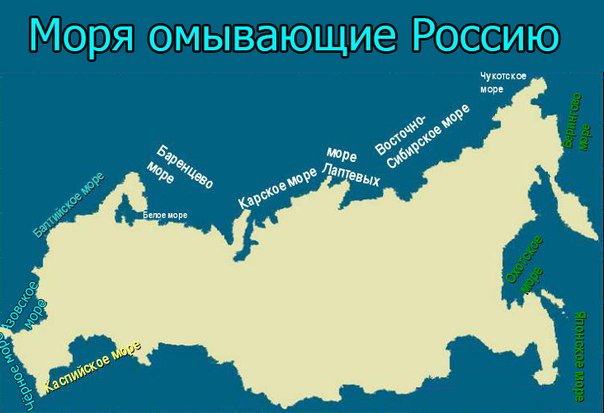
The territory of all of Russia is washed by 12 seas , which belong to the three largest oceans of the whole world. Borders with neighboring states lie along many seas. Our country is rich in sea coasts.
Summarizing this fact, it is worth saying that our residents have a place to celebrate their summer holidays. No one can boast of such a diverse selection of seaside resorts.
